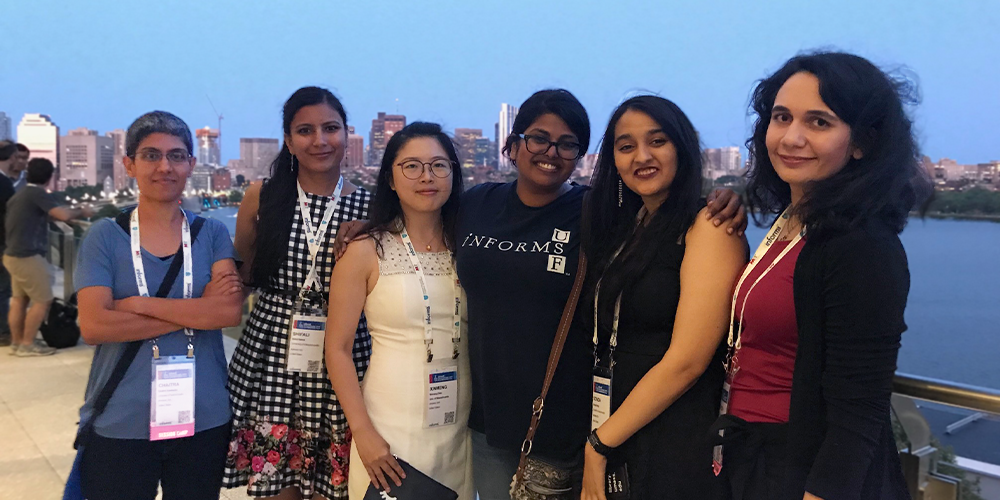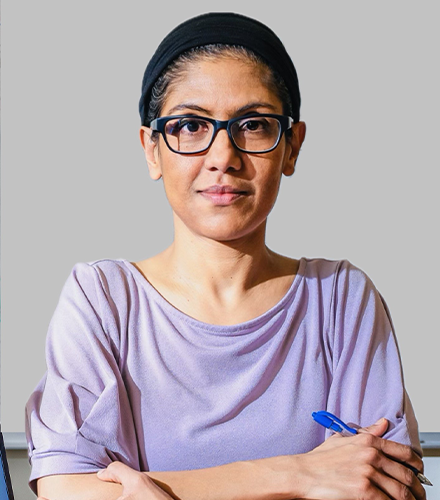
Chaitra Gopalappa received her PhD from USF in industrial engineering in 2010 and
is now an associate professor at the University of Massachusetts Amherst and a guest
researcher with the Centers for Disease Control.
Originally from the state of Karnataka in India, her work focuses on using new technologies
and data to address health disparities, shaping the emerging field of disease modeling
to improve health around the world. She’s also working to pave the way for other women
in industrial engineering and supporting other women in STEM in breaking through career
barriers.
Gopalappa recently connected with USF World to share some insights into her career
and research.
USF World: In a recent post on LinkedIn, you mentioned a new research initiative you are leading on the convergence of health,
behavioral science, engineering, and artificial intelligence to explore what creates
health disparities. How is that progressing?
Gopalappa: We are focusing on preventable diseases in general—both communicable and non-communicable—that
have good preventive and treatment options, but “the conditions in the environments where people are born, live, learn, work, play
worship and age” often influence who has access to treatment options or who can afford it. These conditions
are referred to as the “social determinants of heath.”
We are focusing on preventable diseases in general—both communicable and non-communicable—that have good preventive and treatment options...
A holistic approach that collectively addresses social and health care needs would
be necessary to make a significant impact on health equity. However, achieving this
goal is a complex challenge involving decision analytics related to policies, programs
and operations at various sectors. Analyses of these decisions cannot be achieved
through fragmented independent research projects.
This led us—an interdisciplinary team from academia —in collaboration with public
agencies and partners, to initiate efforts towards creating a potential center for
muti-sectoral decision analytics for health equity and social justice. We recently
received a one-year seed funding from my university to help with team building and
ideation. So, we are in the very early stages of a long-term research goal. To see
additional detail, here is a recent news article about this research.
USF World: You described this as “a research topic that has motivated every twist and turn in the career path and activities I have taken-up thus far.” That takes us back to your years at USF. What was your PhD dissertation topic? Are you still in touch with your professors and research guides?
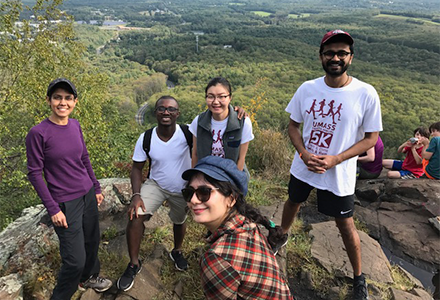
Gopalappa: I started at USF as a MS student — advised by Dr. Tapas Das in Industrial Engineering
— aiming for an industrial career. I was surprised to see that IE could be applied
to health and, by association, social disparities too, and was excited to be involved
in this area of research. This was also my first experience at research, and I was
immediately hooked.
I was very fortunate to have a chance to continue into a PhD program. My dissertation,
“Three Essays on Analytical Models to Improve Early Detection of Cancer” included
new methods for deriving cancer screening guidelines specific to population sub-groups.
This minimizes data-induced bias typical of aggregated data — data bias is one of
the pathways to disparities.
I converse with Dr. Das regularly. He continues to be a strong supporter of my work
and is a collaborator on the work mentioned in the response to your first question.
I meet many of my professors at our USF alumni dinner at our academic society’s annual
meeting organized by USF’s Industrial and Management Systems Engineering (IMSE) department.
This is something I look forward to every year, as it is amazing to see the phenomenal
work of the faculty at IMSE, as well as how much the department’s reach has grown.
USF World: How would you describe USF’s role in shaping your professional ambitions and choices?
And what was your reaction on hearing that USF is now a member of the Association
of American Universities (AAU)?
Gopalappa: USF has played a big role in helping me find what I like, not just the fact that it
was in health, but specifically related to disparities. If I was doing research on
a topic that did not have a big impact on society, I don’t think that I would have
been this happy with my job. I have always loved math and computational work but using
it to do something I am very passionate about adds that much more excitement and energy
to my work every day.
My first reaction when I heard about USF’s AAU ranking was: Finally! It got the recognition
it deserved. Kudos to all the faculty and staff for this phenomenal achievement!!
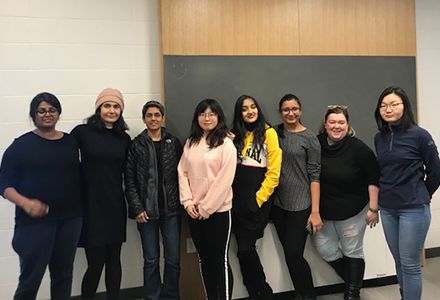
USF World: You were a Prevention Effectiveness Fellow until 2012 and a decade later a researcher at the Centers for Disease Control, a position you still hold. How has the role and significance changed in this decade, especially in the post-Covid world?
Gopalappa: My choice of going to the CDC after my PhD in 2010 and to Avenir Health from 2012
to 2014 was very unexpected — I just chanced upon it. At USF, I realized what industrial
engineering is capable of, which generated an interest in solving problems that are
barriers to health equity and social justice. But I guess I wanted to get a better
understanding of what the problem was… what am I even trying to solve?
Post-Covid, the significance of modeling and the role of the CDC has changed. It shed
a positive light on the need for research in health disparities and its association
with social determinants of health, with Covid acting as a magnifying lens. My work
with the CDC is not necessary on Covid, though, as I have been collaborating with
them on NIH (National Institutes of Health) and NSF (National Science Foundation)
grants since 2014. This work focuses on the syndemics of HIV/STIs, mental health,
substance use disorder and social determinants, which are concentrated in the most
vulnerable populations. But because of the significant stigma associated with these
conditions, they don’t get as much attention.
I was attracted to this topic area given the novel approach that recognized that social
determinants of health are the drivers of high-risk behaviors that cause infection
— rather than infection is caused by high-risk behaviors. Disclosure: I am a guest
researcher with the CDC since 2020. This is a non-paid position. It mainly provides
me access to data and other resources for my research.
USF World: You have been involved in and organizing activities related to Women in Operations
Research and Management Science (WORMS), which was formed in 1995. What are the issues
facing women in this field?
Gopalappa: Women are generally underrepresented in engineering. But when it comes to areas that
have a societal impact, more women — and underrepresented minorities in general —
are drawn to it. WORMS was created to provide a platform to discuss issues and barriers
to the advancement of women; it has created a strong network of peer mentors. Just
navigating through barriers can take away the time otherwise spent on career development,
so this support system plays a critical role.
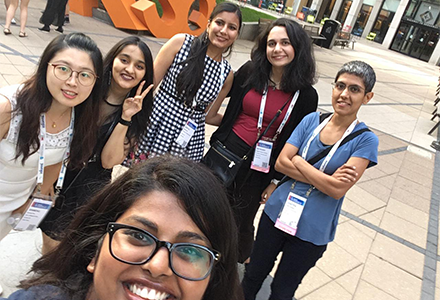 Graduate students in Professor Gopalappa’s lab at the INFORMS conference
Graduate students in Professor Gopalappa’s lab at the INFORMS conferenceUSF World: You did your bachelor's degree in industrial engineering from the Bangalore Institute
of Technology in Karnataka, graduating more than two decades ago. Late last year you
were back in the city you grew up in to present at a couple of conferences. How has
the education landscape changed there, especially for women in STEM studies? Did you
face any pressures when you opted for engineering?
Gopalappa: I loved math and physics, technology, machines and coding, so choosing engineering
as an academic path was an easy decision to make. My family did not care what academic
path I chose, so long as I could get into a stable career and be financially independent.
I don’t mean this lightly, but to stress that I was very fortunate to have this family
support and freedom.
The academic landscape has changed, though. I think at that time only our head-of-department
held a PhD degree, but he did not do research, so I never really knew what research
was. I believe research in addition to the direct impact on advancing society can
be a motivating factor for classroom engagement of students. Considering that many
of the societal challenges need to be addressed through research — industrial engineering
has a vast reach in this regard — it can especially be attractive to women.
I used to read about research in news articles, which sounded super cool, but it never
occurred to me that I could choose to be a researcher someday. I initially applied
for (master’s) coursework only, as research just seemed out of reach. Representation
does matter, and I hope there are more opportunities for exposure to research early
on, at an undergraduate or even high school levels; there is so much untapped talent.
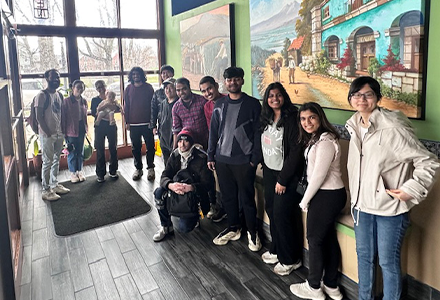
USF World: Who have been your mentors? Any special words of wisdom from them that you still hold
on to as you move ahead?
Gopalappa: My PhD advisor, Dr. Das, and my post-doctoral advisors at the CDC, Paul Farnham and
Dr. Stephanie Sansom, have been (and continue to be) my strongest supporters and mentors.
I was also fortunate to have other mentor interactions during my fellowship project
at the CDC, such as with Dr. Melanie Taylor. At the CDC, none of my mentors were in
the IE field, but they all supported me and were open to the ideas I proposed. This
made a significant difference in my career path.
My early education was completed at Cluny Convent High School in Malleshwaram, Bengaluru. I owe it to the excellent teachers there for seeding the love of math and physics, and computational modelling, at an early stage. I have also met many amazing peers at my current university and outside whose support is truly appreciated. I would tell students today, that even though mentors provide important support, as mentees they should take the initiative and not expect to be told what to do or to just do what you are told.
The many friends I made there — some of whom are currently my research collaborators — and the activities we organized are among my fondest memories of USF.
USF World: Finally, any special memories of your days at USF? Were you actively involved in the
Students of India Association? What was your favorite spot on the campus? And when
was your last visit to USF?
Gopalappa: I was involved in the INFORMS (Institute for Operations Research and the Management
Sciences) student chapter, our academic society. The many friends I made there — some
of whom are currently my research collaborators — and the activities we organized
are among my fondest memories of USF. Interestingly, the places I most remember are
the lab in IMSE department and the library, as I worked there till late at night.
And then there was the USF Riverfront Park where we had many chapter events with various
types of games. I haven’t visited USF since I graduated. As I told my advisor, if
you had mountains in Tampa, I would probably move there since any free time I have
I am outdoors!
